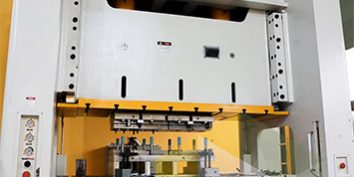What do you need to consider when buying a precision hardware punching machine? The expected production run is one of the most important factors to consider when selecting a precision stamping machine or process.
This attribute can be decisive at the time of purchase, as different processes are capable of making different scale production runs, and some can only be operated on certain types of presses.
The three main types of precision stamping processes are:
- Soft machining: This is usually the cheaper process because it uses only one punching machine. However, the labor cost per part makes it less cost effective in the high volume production cycle. Soft molds usually produce up to 10,000 parts per year.
- Stage die: Stage die manually moves pre-cut blanks between two to five presses to achieve the desired product design, this process has lower labor costs than soft machining, but higher processing costs and can produce up to about 20,000 products per year.
- Hard Die: This is an automated version of the phased die process that helps simplify multi-step stamping methods and provides higher productivity. Due to the addition of computer control technology, its mold costs are high initially, but in the long run, labor costs will be reduced.
Hard moulds are most suitable for products with an annual output of more than 20,000 sets.






